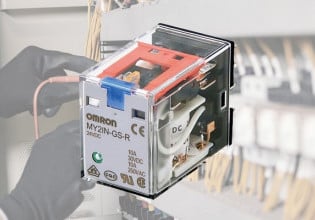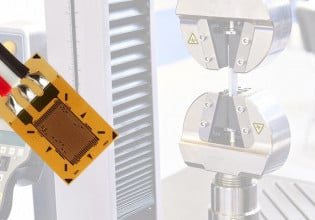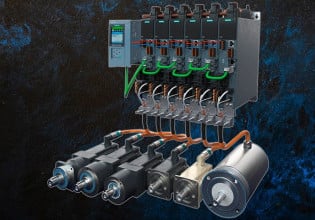Unconventional Commercial and Industrial Applications of Drones
This article discusses recent applications of drones and how companies are developing more commercially advanced applications, specifically in the industrial and manufacturing industries.
Drones have been heavily researched for almost a decade now and the technology has eventually matured and stabilized enough for commercial viability. Conventionally, drones have been used with cameras mounted on them, for photography and videography with manual control.
With the advancements in the robotics industry, MEMS-sensor technology, and communication protocols; drones have started becoming a part of various other commercial endeavors replacing conventional platforms like terrestrial robots, customized automation platforms, and skilled/unskilled personnel.
How Are Drones Unique?
Drones are capable of flying in 3D space, thus overcoming all possible limitations of the customized robots developed for traversing through non-navigable terrains or hazardous surroundings or navigating indoor/outdoor industrial environments. Drones have limited onboard power and thus, only solutions that can be deployed on short-flights are feasible.
Fortunately, recent research in lightweight drone design, better batteries and improved power consumption has made flight times of up to 2 hours.
Companies creating novel drone solutions exploit their agility and the absence of a need for a path or a route for navigation. They can take off and land vertically, at any location. The advent of autonomous drone technology, largely still in the R&D stage, has made drones ever more favorable.
Companies with Innovative Drone-based Solutions
Several companies are building applications on the visual feed of the drone for surveying and mapping tasks. Such companies use drones to deliver Data-as-a-Service (DaaS) solutions by post-processing the feed from cameras, LiDARs, GPS, and other onboard sensors.
Skydio, a Redwood City-based company, is developing drones with high-definition cameras, capable of flying autonomously while tracking a human-subject or a pre-defined path. They are mounted with six 4K cameras, a 3-axis gimbal, and a range of 3.5 kms. They are suitable for autonomous adventure videography and reliable flying.
Skycatch uses a suite of high-definition cameras and performs 2D and 3D site analysis using drones. Their solution is ideal for mining sites for earth-moving activities providing high-fidelity 3D models of vertical surfaces. They propose their contour maps are accurate to 5cm, which helps accurate visualization and analysis of the construction activities.
Flytware uses cameras mounted on small agile drones for warehouse management, product tracking, storage management, and automated counting of objects. Their drones can navigate autonomously through narrow and tall aisles, even in GPS-denied environments, and can track and detect barcodes, multiple stacked pallets, and QR codes on objects. Using AI techniques on camera feed and sensors, they are able to provide scalable and reliable inventory management solutions.

Zipline drone. Image used courtesy of Zipline.

Skydio Drones. Image used courtesy of Skydio.
Airlitix is an early stage AgTech company using drones to provide solutions for greenhouse monitoring. They develop drones that can navigate autonomously in GPS-denied indoor locations, primarily greenhouses, and gather information about plant health and surroundings. It involves crop images and plant topography determination using LiDAR-based mapping. Such results help owners optimize various activities in greenhouse-like irrigation, temperature control, harvesting, weeding, spraying of pesticides, insecticides, and more. They eventually help enhance profits by reducing waste, reducing labor, and increasing yield.
Zipline is a Bay Area and Rwanda based company that operated autonomous UAV and drone flights for quick dash delivers for critical and lifesaving products like blood, medicines, and survival kits. Their flights have onboard autonomous navigation systems and can carry sufficient payload.
Aerialtronics, a European company develops solutions for visual inspections in the oil and gas, wind turbine, and powerlines. Skyspecs is a Michigan-based startup performing automated, collision-free wind-mill inspection while handling different wind and weather conditions. They have also been covered by the U.S. Department of Energy's Office of Energy Efficiency and Renewable Energy (EERE) in their blogs.

Aerialtronics Oil & Gas Inspection. Image used courtesy of Aerialtronics.

Skyspecs’ windmill inspection. Image used courtesy of Skyspecs Website, Flyability Case Study.
The task of inspecting corrosion cracks, wear-and-tear, and other physical problems in inaccessible industrial settings has been reduced to minutes due to drone technology. They can inspect pipes, conduits, boiler vessels, nuclear plant vessels, suction ducts, conduits, and other inaccessible or hazardous sections of the setup.
LafargeHolcim, a Tanzania-based cement producer shifted from using manual labor and personnel to manage its stockpile inventory, to using Sensefly’s drones that can take plant pictures from heights of 120m, post-process them and provide accurate information about the stockpile, thereby reducing the process duration from 2 days to an hour and enhancing the efficiency of the plant and limestone quarry.
Case studies from Flyability speak volumes about the high adoption rate and industrial acceptance that drones have garnered in the past 5 years for such solutions. One such case study mentions how its collision-proof drones have been able to inspect Barcelona’s underground sewer system leakage issue.

Flyability’s drone in a sewer pipeline. Image used courtesy of Flyability Case Study.

Cement Plant Aerial Image using SenseFly drones. Image used courtesy of SenseFly Case Study.
There is a huge suite of drone companies, like Boeing and Lockheed Martin, working with defense and military organizations for applications like surveillance, remote border infiltration monitoring, and public safety management and security patrolling. Recent environment mishaps and calamities have made drone applications for monitoring power lines, wildfires, and solar farm and windmill health very lucrative commercial as well as social opportunities.
Future of Drones
The above-mentioned companies only represent a handful of companies working on drone-based solutions for unconventional tasks. While many of these will fail to convert their novel idea into a commercially viable and scalable solution, they are certainly pushing the boundaries of research and innovation on drones.
Drones are the future of robotics and barring the power limitations, the most potential successors of general-purpose robotic platforms like robotic manipulators from the 20th century or mobile robots from the past decade.






